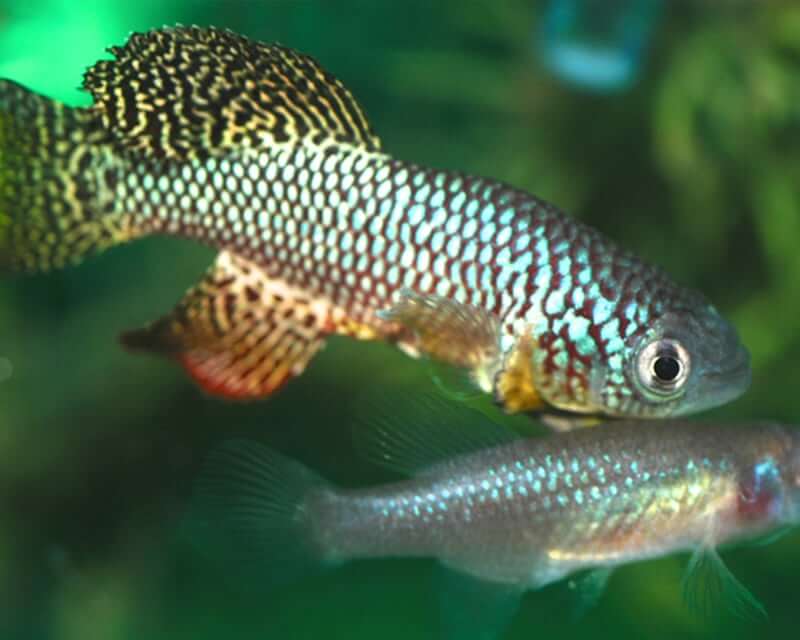Laboratory Mouse
 Inbred laboratory strains of mice are the most common mammalian models used in aging research. In well-maintained specific-pathogen-free animals, C57BL/6 mice should live 26-30 months on average. Mice in nature live 3-4 months on average and up to 18 months at the most. Hence the biology of mouse aging as studied in the laboratory is not relevant to their life in the wild.
Inbred laboratory strains of mice are the most common mammalian models used in aging research. In well-maintained specific-pathogen-free animals, C57BL/6 mice should live 26-30 months on average. Mice in nature live 3-4 months on average and up to 18 months at the most. Hence the biology of mouse aging as studied in the laboratory is not relevant to their life in the wild.
Turquoise Killifish
 The Turquoise Killifish (Nothobranchius furzeri) is the shortest-lived vertebrate currently bred in captivity. There are multiple strains in the wild showing significant variability in longevity and life history characteristics; several of these are maintained in captivity. The inbred GRZ laboratory strain is the shortest lived with a published median lifespan of 12-15 weeks and a maximum lifespan of 20 weeks in captivity. In more recent studies, the GRZ strain lives considerably longer than this, roughly 6 months, although that still makes it one of the shortestlived vertebrates.
The Turquoise Killifish (Nothobranchius furzeri) is the shortest-lived vertebrate currently bred in captivity. There are multiple strains in the wild showing significant variability in longevity and life history characteristics; several of these are maintained in captivity. The inbred GRZ laboratory strain is the shortest lived with a published median lifespan of 12-15 weeks and a maximum lifespan of 20 weeks in captivity. In more recent studies, the GRZ strain lives considerably longer than this, roughly 6 months, although that still makes it one of the shortestlived vertebrates.
More information on this species is available at the NFIN website.
Hydra
 Hydra species, freshwater cnidarians, are one of the few groups of animals with no defined aging. The longest studies to date (~8 years) observed no increase in mortality rate, or decrease in reproductive rate and the mortality rate in those hydra was no different than in a clone that was at least 41 years old. Hydra have no sequestered germline which may contribute to this unusual life history.
Hydra species, freshwater cnidarians, are one of the few groups of animals with no defined aging. The longest studies to date (~8 years) observed no increase in mortality rate, or decrease in reproductive rate and the mortality rate in those hydra was no different than in a clone that was at least 41 years old. Hydra have no sequestered germline which may contribute to this unusual life history.